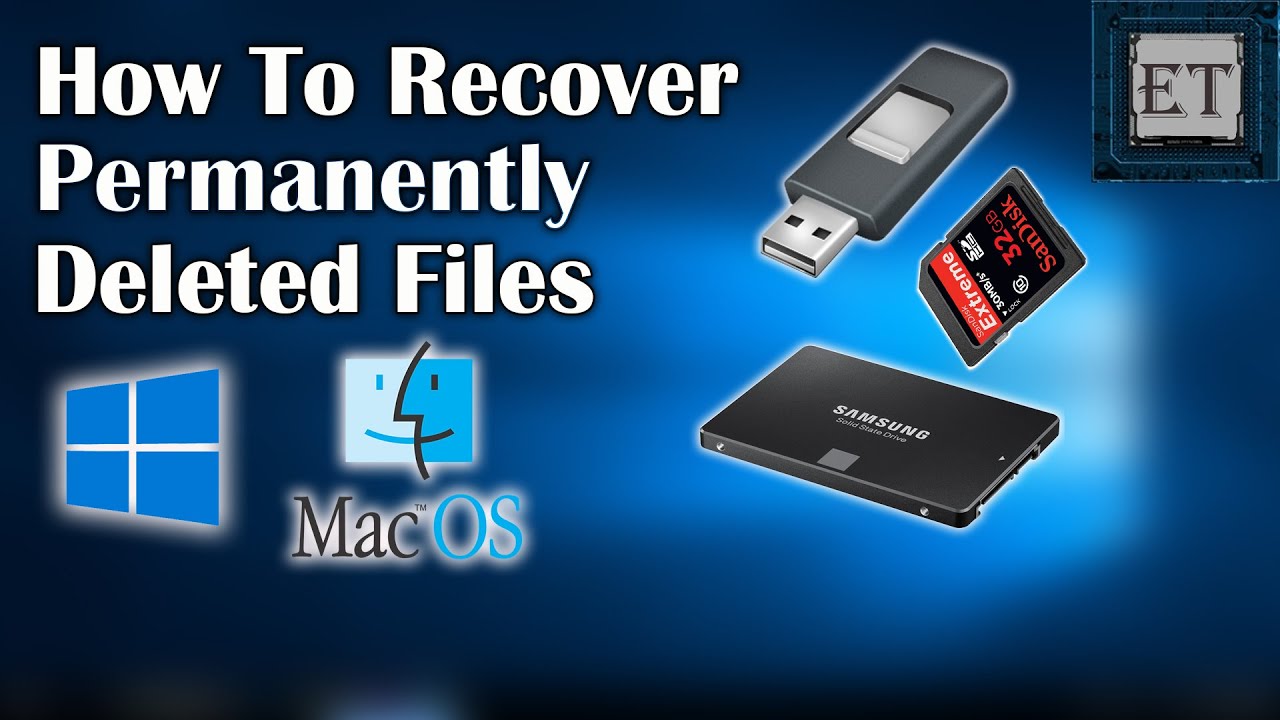An accidental deletion of important files is a kind of ‘been there, done that’ situation for most of us. The question that strikes your mind next is: Is it possible to recover deleted data from your Windows 10 computer’s hard disk? Now, the chance and the way of data recovery depends on how you have deleted the file.
For example, selecting those unintended files and pressing the Delete key will teleport your files to the Recycle Bin folder. It’s comparatively easier to retrieve deleted files from the folder of Recycle Bin. However, a permanent deletion is a bit hard to reverse. Let’s find out ways to recover deleted files from the hard disk on your Windows 10 computer.
1. Restore Accidentally Deleted Files from Recycle Bin
As long as you don’t permanently delete (Shift + Delete) files from your PC’s hard disk, they are safe in the Recycle Bin folder, as confirmed by Data Recovery Dubai experts. Indeed, the Recycle Bin folder is there to give you time and reconsider your decision.
Here’s how you can retrieve erased files from Recycle Bin:
- Double-click the icon of Recycle Bin to access deleted files and applications.
- Now, look for files that you have accidentally deleted and select them.
- Right-click on the selected file portion and choose the Restore option.
Wait for a while and your deleted files should be restored to their original places on the hard disk. However, using the Delete button doesn’t erase data immediately and the storage space doesn’t get freed up.
That’s why many users prefer using the Shift + Delete combination to permanently delete files. Thus, you might end up deleting an unintended file by mistake. Unfortunately, the deleted file doesn’t exist in Recycle Bin as well.
2. Try the File History
Backup and Restore, a useful data recovery component introduced by Windows Vista, has been replaced by File History on Windows 10. This built-in utility can help you restore deleted files and folders if you have turned the feature on. So, here’s what you can do if you have enabled the option for data recovery:
- Access the Control Panel and look for the Windows File History option. Otherwise, you can look for the same option using the Windows search box.
- Once you reach the File History window, click on Restore Personal Files. This will restore the older versions of the deleted files.
- You should save those restored files to a new folder or location instead of their original place.
3. Locate Deleted Files on Your Hard Drive from Previous Versions
You might not be aware of the hidden features of Windows 10 and they can be a treasure in such situations. Fortunately, Windows allows users to restore files and folders to its previous version. Moreover, you can try this feature from the exact location where your files went missing from the hard disk.
Check out the process below:
- Navigate to the folder from where you have mistakenly deleted the file forever.
- Now, right-click on the folder and a context menu will show up.
- Click the option called ‘Restore Previous Versions’ from the menu.
- A list of available versions will pop up and you can select the version dated before you deleted the file accidentally.
- Afterwards, click the Restore button followed by the OK one.
See if the method works and your permanently deleted file reappears.
4. Retrieve Permanently Removed Files from an Older Backup
For those who have upgraded their Windows 7 to Windows 10, you can opt for this method to recover permanently deleted files. However, the hack will be a success if you have created backups on your Windows computer using the Backup and Restore tool.
Now, here’s what you have to follow to recover permanently deleted files from your hard disk:
- Click the Windows icon and type ‘backup’.
- After that, hit the Enter key and choose the ‘Looking for an older backup?’ option.
- Next, choose the option that says, ‘Go to Backup and Restore (Windows 7)’.
- Select your backup under the option called ‘Select another backup to restore files from’.
- Once you choose the backup version, go for Next.
Check if you have successfully restored the permanently deleted files.
5. Use Windows File Recovery
Are you looking for a tool to recover permanently deleted files from your Windows 10 PC’s hard disk? If you don’t want to use third-party software, you can try Microsoft’s Windows File Recovery. It’s a free command-line utility that supports file recovery on SSDs, mechanical hard drives, memory cards, and USB drives.
Well, the tool is great for both regular and advanced modes to revive permanently deleted files. The tool doesn’t come built-in for Windows 10 devices so you should install the program from Microsoft Store. After installation, double-click its shortcut and it will open a Command Prompt window.
Now, go through the directions below:
- Visit the support page of Microsoft’s Windows File Recovery application.
- Read out all the required instructions from there before giving those commands a try.
- Find out the necessary command lines to execute for the sake of the data recovery Dubai process.
- After that, type the command followed by the restore destination, recovery mode, and the location or name of the deleted files, respectively.
The issue with this method is that command lines should be used in proper switches and syntax. So, it can be a hit or miss and you might not get a sure result.
6. Recover Deleted Files with Command Prompt
Trying to restore files without third-party software is a daunting task. However, you can try this trick that involves a Command Prompt window. Note that you must not engage in other activities on your computer while the following file restoration process is running. Otherwise, your hard disk may get overwritten.
Let’s see what you have to do:
- Go to the Windows search utility and type ‘cmd’.
- Next, right-click on the result called Command Prompt.
- Choose ‘Run as administrator’ and wait for the Command Prompt to open up.
- Type the command ‘chkdsk DiskLetter: /f’ and run it. Make sure you replace the DiskLetter with the hard drive’s letter.
- Then, type the command ‘ATTRIB -H -R -S /S /D DiskLetter:*.*’ and press Enter to run the command. Replace DiskLetter with the letter of your hard drive from which you need to recover deleted files.
Now, let the recovery process run. The overall recovery can take a while so keep patience.
7. Use Backups to Access Deleted Files
Many users prefer backing up their data and thus, they are prepared to face situations like this. So, you can get out of such emergencies if you prioritise backing up your data on your Windows 10 PC. On the other hand, you might have backed up your data on cloud or local backups like in the form of external drives.
If you have saved the backup on your Windows 10 device, here’s how you can retrieve it.
- Navigate to the Control Panel window on your PC.
- Select the System and Security option followed by the ‘Backup and Restore’ option.
- After the ‘Backup and Restore’ window appears, choose the option called ‘Restore my files’.
- The new window will show up the backups created by you. Select a particular backup that you believe to have the deleted file or folder.
- Let the PC restore your intended files.
8. Opt for Third-Party Software
Chances are that your deleted files are still a no-show. However, you can try a professional data recovery solution or software to safely extract deleted data from your hard disk. Typically, professional and dedicated data recovery tools are a hit because:
- They can retrieve lost, deleted, or corrupted files due to any Windows crash or error.
- Additionally, they are capable of recovering data from lost partitions, local and external disks, crashed PCs, encrypted disks, and more.
- Indeed, you can recover a wide range of file types with these data recovery tools.
- They come with a smooth interface so you don’t have to deal with difficult command lines and their syntax.
- Being powered by the latest technology, they can give you faster and more accurate results.
Ensure that you go for paid data recovery tools as they are free from adware, viruses, malware, and pop-ups. Search for them online and download the best compatible tool for your Windows 10 PC.
Wrapping up…
If you are still stuck in the lost data condition, you can contact a professional data recovery Dubai service provider. Data recovery Dubai experts use state-of-the-art technologies to extract your deleted files with every safety guideline maintained.



